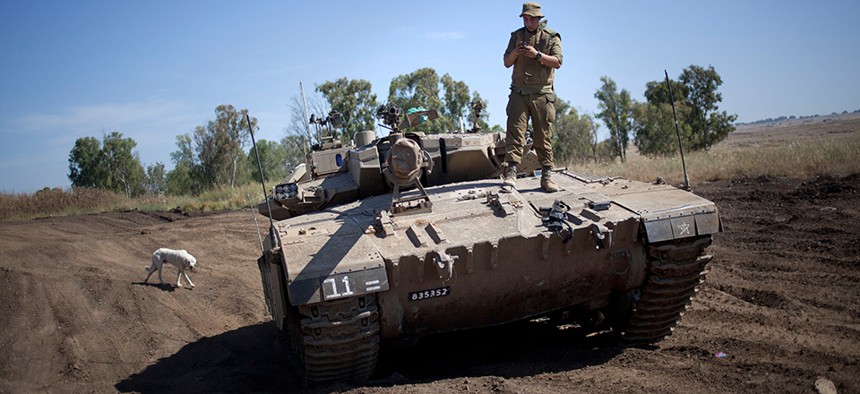In The Tank: This Week’s Best Defense and National Security Think Tank Offerings
The latest in wonk reads on national security, tech, and more. By Kedar Pavgi
Welcome to “In the Tank”, Defense One’s weekly think tank roundup. Every week, we’ll present the latest research published by think tanks from around the world on defense, national security, foreign policy, technology, and management – a tool to help the national security community navigate the future. If you’d like to submit your latest research, email Kedar Pavgi at webmaster@defenseone.com.
Sustaining the U.S. Air Force Nuclear Mission
RAND Corp.
Don Snyder, Sarah A. Nowak, Mahyar A. Amouzegar, Julie Kim, Richard Mesic
Defense One recently published several pieces that debated the cost of the United States’ nuclear weapons and their value to deterrence. Deputy Secretary of Defense Ash Carter said that the $16 billion spent annually on nuclear weapons -- or 3 percent of the Pentagon’s overall budget -- is “relatively affordable” given the importance of the mission. With a smaller force because of budgetary constraints, the Air Force is likely to face difficulties managing its nuclear enterprise in the future. The paper pushes the Air Force for technological consolidations and longer-term plans to be budget-efficient.
The Egyptian Restoration
Sarah Chayes
Carnegie Endowment for International Peace
Egypt’s military is back in charge of the country, but this time the protestors that deposed former president Hosni Mubarak are firmly on the side of Defense Minister Abdel Fattah Al-Sissi. Though Washington has stood behind the country’s military, Sarah Chayes argues that the protestors weren’t against the military when they revolted in 2011; they were protesting a system that allowed a collective of individuals to enrich themselves at the detriment of society at large.
Enhancing South Korean–U.S. Naval Capabilities Is Critical to American Interests
Bruce Klinger
Heritage Foundation
Even with the massive U.S. force in South Korea, and regular military exercises between the two countries, policymakers remain concerned about how well an allied force could respond to a North Korean attack. Bruce Klinger, a senior research fellow at the Heritage Foundation says that South Korea’s air and sea forces have been “underemphasized and underfunded” because of the historical ground based threat from North Korea. The sinking of the Cheonan in 2010 exposed major vulnerabilities in South Korea’s naval capabilities. Among the major gaps, he says the South Korean Navy lacks effective C4ISR technology and an inability to combat submarine based warfare. To bolster this force, Klinger argues that the U.S. and South Korea should expand the number of naval exercises, and work to enhance the capabilities of South Korea’s Navy. Additionally, other diplomatic moves could be undertaken to enhance regional cooperation and promote a more unified front towards possible North Korean aggression.
Lessons from Department of Defense Disaster Relief Efforts in the Asia-Pacific Region
RAND Corp.
Jennifer D. P. Moroney, Stephanie Pezard, Laurel E. Miller, Jeffrey G. Engstrom, Abby Doll
Military personnel were extensively used to support recovery efforts in major natural disasters such as the 2010 Haiti Earthquake and Hurricane Sandy, last fall. The paper looks at operations following several major disasters in Asia, including Cyclone Nargis, the Padang Earthquake in Indonesia and the 2010 earthquake in Japan. The authors provide lessons and recommendations for the Defense Department to work better with other U.S. government agencies and international organizations.
A Strategy to Reduce Gun Trafficking and Violence in the Americas
Julie E. Sweig
Council on Foreign Relations
The Defense Department recently established a special operations headquarters at U.S. NORTHCOM to help train Mexican officials in the same methods that were used to track and hunt al-Qaeda abroad. Council on Foreign Relations Senior Fellow Julie E. Sweig argues that more needs to be done in other policy areas to stem violence across the Americas. A lack of U.S. gun control policy is the root cause of the conflagrations, she claims, and the Obama administration needs to pursue strategies to “reduce the trafficking of firearms” across Latin America.





